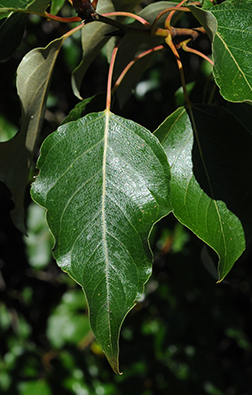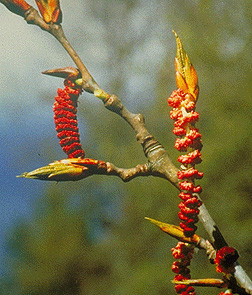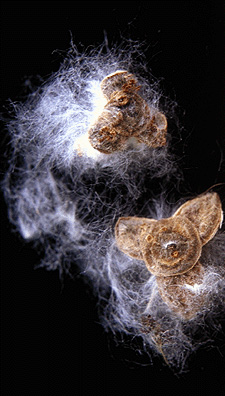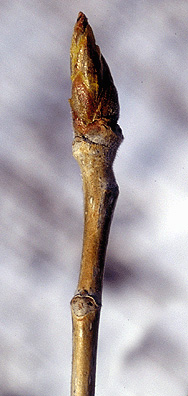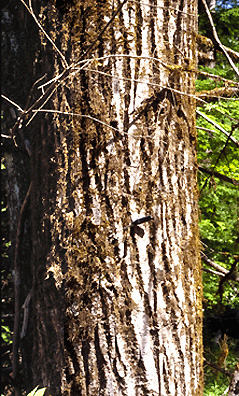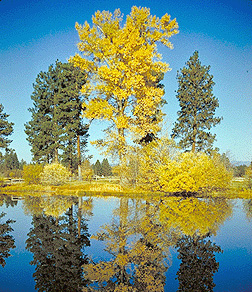 Virginia Tech Dendrology
Virginia Tech Dendrology
black cottonwood Salicaceae Populus
balsamifera ssp. trichocarpa L. ssp. (Torr. & A. Gray ex Hook.) Brayshaw
![]()
![]() symbol: POBAT
symbol: POBAT
Leaf: Alternate, simple, deciduous; variable in size and shape on same tree, commonly 3 to 6 inches long, but can be much larger; ovate-lanceolate to deltoid, dark green above and silvery white below with rusty smears of resin, margins wavy to crenate; petiole long, and most often round but may be flattened.
Flower: Species is dioecious; borne in long, drooping aments that appear before the leaves.
Fruit: Rounded, 3-valved capsules (1/4 to 1/2 inch in diameter) which open to release many cottony-tufted seeds; seeds are very tiny and black.
Twig: Moderately stout, greenish brown to olive-gray, often ribbed or angled in cross section when young, covered with distinct lenticles, spur shoots are common on older branches; buds are long (1/2 to 3/4 inch) and sharp-pointed, resinous and aromatic, covered with imbricate scales. Twig has a bitter aspirin taste.
Bark: When young it is smooth and yellowish tan to gray; later gray to gray-brown and broken into deep furrows and flattened ridges, up to 2 1/2 inches thick.
Form: The tallest broad-leaved tree in the West, growing to 200 feet tall and 6 feet in diameter. Has a broad, open crown.
Looks like: balsam poplar
- quaking aspen
- narrowleaf cottonwood
- Fremont cottonwood
Additional Range Information: Populus balsamifera ssp. trichocarpa is native to North America. Range may be expanded by planting. Download the full-size PDF map.
More Information: Fall Color - Wood - Landowner Factsheet
External Links: USDAFS Silvics of North America - USDAFS FEIS Silvics - USDA Plants Database - USDAFS Forest Products Lab
All material 2025 Virginia Tech Dept. of Forest Resources and Environmental Conservation; Photos and text by: John Seiler, Edward Jensen, Alex Niemiera, and John Peterson; Silvics reprinted from Ag Handbook 654; range map source information
